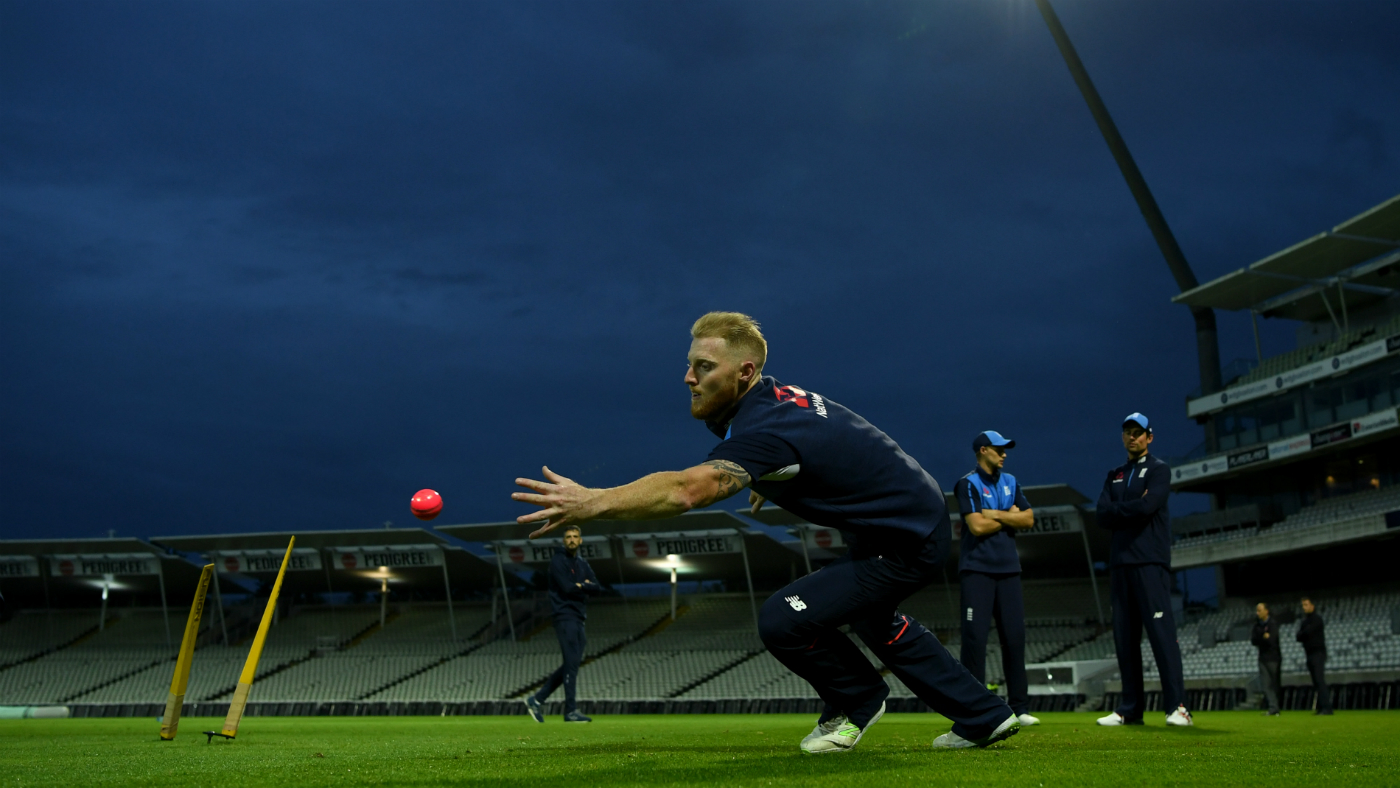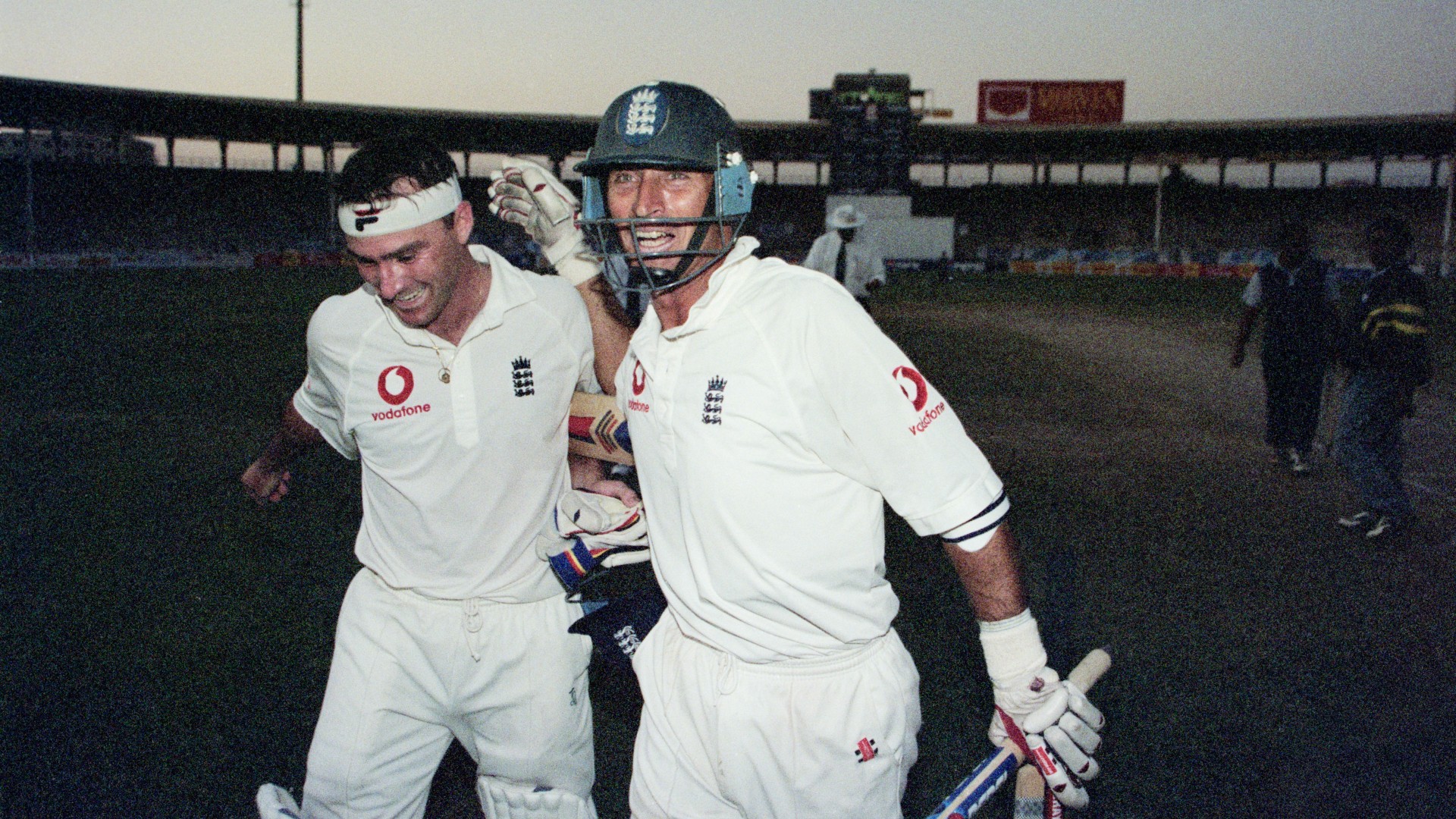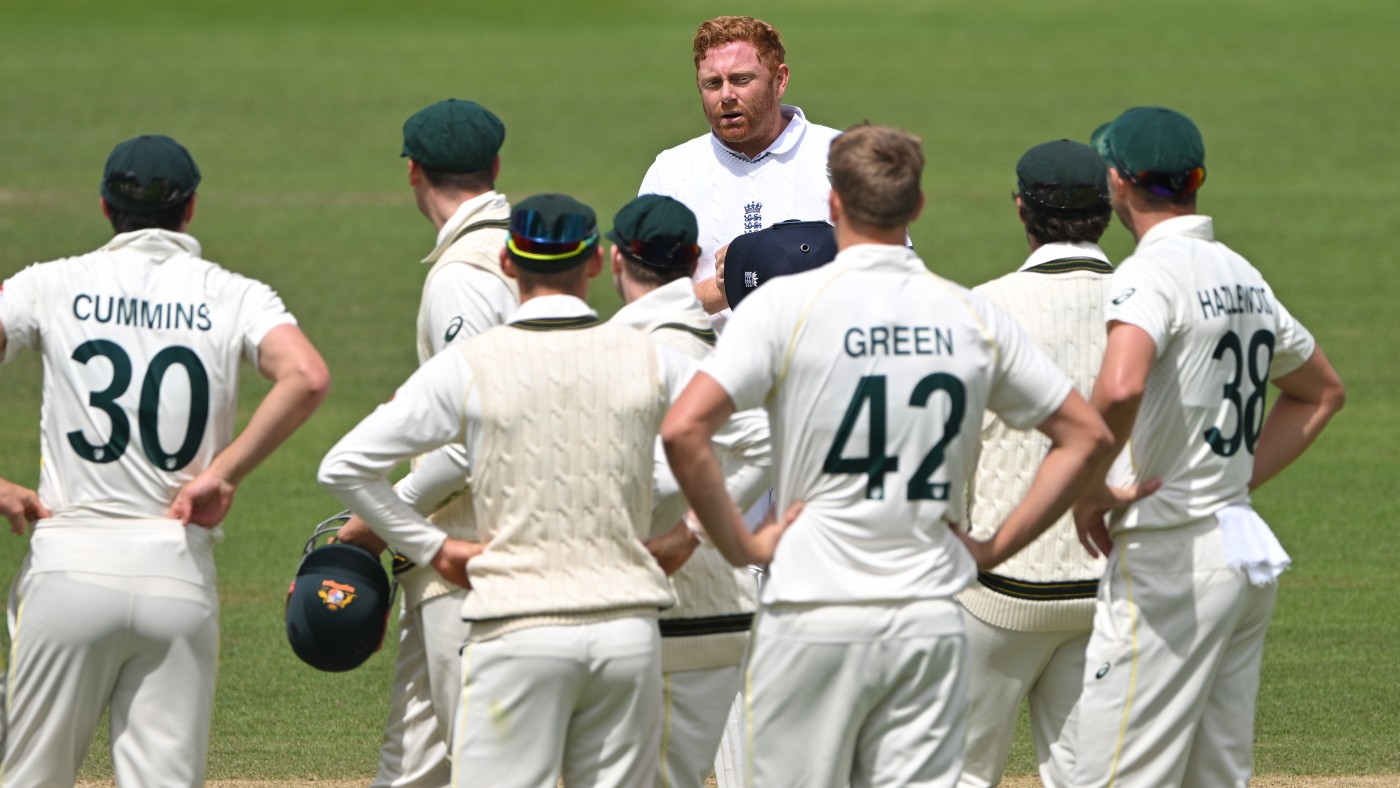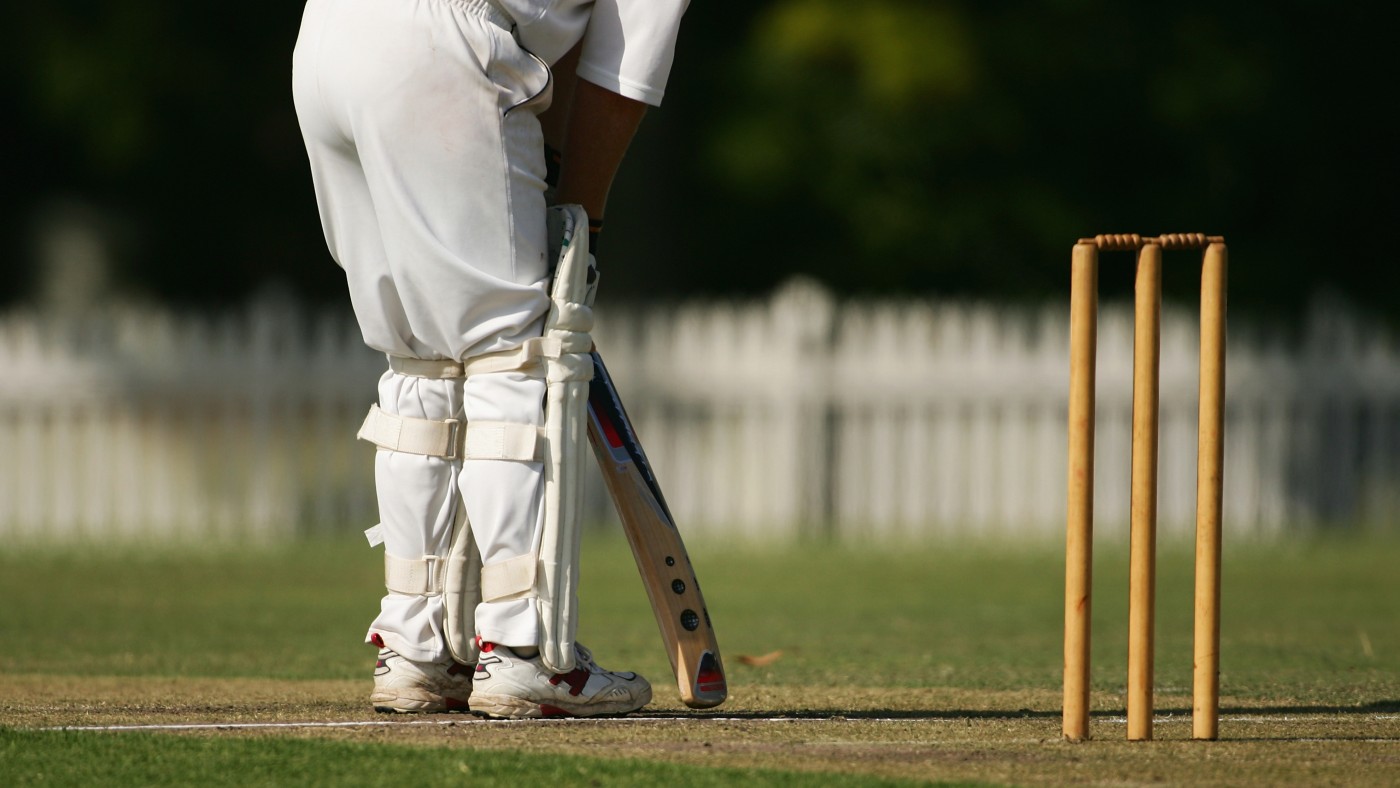Day-night Test cricket: The challenges facing England
West Indies lie in wait as Edgbaston hosts UK's first match of this kind

England are preparing for the first day-night Test to be held in England, which begins on Thursday.
The challenges range from the question of "how the pink Dukes balls will perform, to the difficulties of batting as darkness falls, to the issue of whether starting later and the use of floodlights might require different tactics," says Cricinfo.
Here's what England are up against:
The Week
Escape your echo chamber. Get the facts behind the news, plus analysis from multiple perspectives.

Sign up for The Week's Free Newsletters
From our morning news briefing to a weekly Good News Newsletter, get the best of The Week delivered directly to your inbox.
From our morning news briefing to a weekly Good News Newsletter, get the best of The Week delivered directly to your inbox.
The Dukes ball
The Test match is not the first to be held under lights nor is it the first to use a pink ball, but it will be the first to be played with a ball manufactured by Dukes.
The ball was used in a round of county games earlier in the season but not all England's players took part and some were rain-affected. Stuart Broad was one of those who missed out, but he's been brushing up on the ball.
"The Australian guys I know say that in the twilight period, the pink Kookaburra nips around. But in the county round, the guys said the [Dukes] ball went quite soft, quite quickly. It didn't shine up very well at all. It's given bounce for the spinners, but not really turned."
A free daily email with the biggest news stories of the day – and the best features from TheWeek.com
Wicketkeeper Jonny Bairstow was just as curious. "It's going to be fascinating to see how it will react after 60, 70, 80 overs – whether it's going to reverse or swing conventionally. It's going to be a learning curve," he said.
Experience
"England held their first ever pink-ball practice session under the Edgbaston floodlights on Monday night. It will also be their last," says Jonathan Liew of the Daily Telegraph. "It is hard to recall a modern-day England side going into battle with so little preparation, so little idea of what to expect, taking such a leap of faith."
They will be favourites against a West Indian side ranked eighth in the world. But they might prove to be a tough nut to crack. The tourists "have not only played a pink-ball Test before, against Pakistan in Dubai last year, they have also enjoyed an encouraging workout under floodlights, with four individual centuries either side of bowling out Derbyshire for 181 in their latest tour match", says Cricinfo.
"By contrast, the pink-ball matches in the Championship were six weeks ago and, in several cases, rain affected – in Yorkshire's match against Surrey, Joe Root faced 13 balls and Jonny Bairstow did not bat."
How they fare when batting at twilight and under lights remains to be seen.
Weather
Play can continue until 10pm at Edgbaston when there will be dew on the ground and temperatures will be down to around 14C, says The Times.
Stuart Broad says he will be wearing leggings under his trousers in the evening session.
"The colder evening weather offers a greater risk of muscle strains and twanged hamstrings, as Usain Bolt discovered to his cost on Saturday night," says Liew of the Telegraph.
Food
Another, apparently unimportant, issue that could affect the game revolves around the breaks.
"Standard, daytime Tests have their lunch break at, well, lunchtime, and their tea break at, give or take, tea time. A 2pm start distorts the timetable and, while 4pm can be referred to in many ways, if you are calling it lunchtime something has gone badly wrong with your day," says Simon Burnton of The Guardian.
But the first break at Edgbaston will still be called lunch and the second, at 6.40pm, will be tea. Previous day-night Tests have flipped the length of the breaks, but that won't happen at Edgbaston.
"Unlike in other parts of the world, the 40-minute 'lunch' break will be taken after the first session, rather than the second, potentially playing havoc with players' energy requirements," says Liew of the Telegraph. "Bowlers may be required to bowl well into the night having not eaten properly since late afternoon."
Why is it happening?
Despite all the confusion most people welcome the experiment.
"While Test match attendances remain rock solid in England and Wales, the popularity of five-day cricket is in decline in certain parts of the world," explains Sky Sports.
"By shifting the match timings, the hope is that more people will choose to watch Test cricket after work – indeed, you need only take a half-day's holiday to attend a game – and that more children can get a taste for it after school.
"Some 123,000 fans turned up across three days of Australia's clash with New Zealand in November 2015 – a record for a non-Ashes Test – so the early signs are promising."
-
 Political cartoons for December 24
Political cartoons for December 24Cartoons Wednesday's political cartoons include Christmas in Greenland, grinchflation, and California floods
-
 Is there a Christmas truce in the Starmer farmer ding-dong?
Is there a Christmas truce in the Starmer farmer ding-dong?Today’s Big Question There’s an ‘early present’ for farmers but tensions between Labour and rural communities remain
-
 The history of US nuclear weapons on UK soil
The history of US nuclear weapons on UK soilThe Explainer Arrangement has led to protests and dangerous mishaps
-
 Ashes to ashes, ducks to ducks: the end of Bazball?
Ashes to ashes, ducks to ducks: the end of Bazball?Talking Point Swashbuckling philosophy of England men’s cricket team ‘that once carried all along with it has become divisive and polarising’
-
 How should the cricketing world handle Afghanistan?
How should the cricketing world handle Afghanistan?Talking Point England under pressure to boycott upcoming men's match against the nation, which remains an ICC member despite Taliban ban on women's team
-
 Graham Thorpe obituary: 'chameleon' batsman with 100 England caps
Graham Thorpe obituary: 'chameleon' batsman with 100 England capsIn depth Cricketer's 'bottle in abundance' endeared him to fans
-
 The Ashes: can England mount a glorious comeback?
The Ashes: can England mount a glorious comeback?feature ‘Herculean’ task follows ugly scenes at controversial second test
-
 English cricket is ‘racist, sexist and elitist’, says independent report
English cricket is ‘racist, sexist and elitist’, says independent reportSpeed Read Chair of governing body apologises after crushing indictment of the sport ‘at all levels’
-
 England are the ‘undisputed kings’ of white-ball cricket
England are the ‘undisputed kings’ of white-ball cricketfeature Ben Stokes scored the winning run as England beat Pakistan in the ICC Men’s T20 World Cup final
-
 Ben Stokes and England set up a ‘grand finale’ against South Africa
Ben Stokes and England set up a ‘grand finale’ against South Africafeature In an old-school Test victory at Old Trafford, England’s captain scored a century and took four crucial wickets
-
 ‘Alarm bells’ for authorities: is there too much cricket being played?
‘Alarm bells’ for authorities: is there too much cricket being played?Talking Point Ben Stokes quitting one-day internationals has sparked a debate over the packed schedule